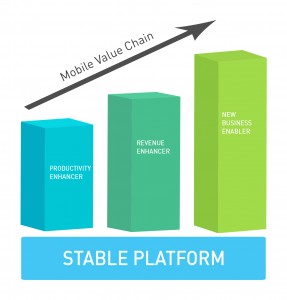Why Acronyms Won’t Mobilise Your Workforce
Authored by Iynky Maheswaran, Head of Mobility

Iynky Maheswaran, Head of Mobility – Macquarie Telecom
Forget the buzzwords! Here is what actually matters when it comes to mobilising your workforce.
If you have worked in IT for a number of years, then you have no doubt experienced a number of hype cycles and buzzwords that are sold as “revolutionary concepts” that will transform your business. Only after investing millions of dollars and hours of your valuable time do you realise that these concepts have not delivered on their promise, and you’re back right where you started with just another system to manage.
The Common Challenge.
This is particularly true when it comes to the enterprise mobility space, which seeks to manage the increasing array of devices, wireless networks and related services to enable broad use of mobile computing in the workplace. Within this particular category, there are acronyms and buzzwords coming out of your ears and a workforce that is demanding to work the way want to on the devices they choose. But how can you implement these changes, and are the buzzword concepts really the best way to implement change?
A few years ago, companies were buzzing about BYOD (Bring Your Own Device), but now EMM (Enterprise Mobility Management) seems to be all the rage. However, just adding one new concept won’t help most businesses mobilise their workforce. The challenge most companies face is not related to efficiency or optimisation, it is that they are missing a stable platform that enables them to realise all these concepts. For many, the challenges are the ability to change business plans, update bills, deactivate some of your old devices and in some cases even order new hardware. For most companies, this means a very labour-intensive process with multiple calls and emails, which can be very invasive to all of your employees.
A stable platform is the key.
If, however, you had a management platform in place that allowed you to complete all of these tasks online in a matter of seconds, you would be able to remove all the stress around the tactical elements of rolling out a BYOD, MDM, or EMM strategy, and you could then focus on the strategic objectives these programs are designed to deliver.
Once you have the platform in place, you can start actually moving your business along the mobile value chain and really begin shifting your focus. You can start with the easy wins and look at what you can do to enhance the productivity of your workers by enabling them to bring any device (BYOD). You can then move into areas that can drive new revenue into your business such as enabling access for your sales team to the CRM on mobile devices (MAM). Finally, once you have looked at all the options internally, you can start to look externally and attempt to identify new business areas created by mobilising your applications and workforce.

This transformation won’t happen overnight, but if you start focusing on building that stable platform for your business today, it won’t be long before you are coming to the business will new potential revenue stream ideas.
To kick start your journey to a truly mobile enterprise you first need a clear view of your existing mobile fleet. Get a mobile bill assessment today to get a clearer picture of your current spending and where you could be saving money.

